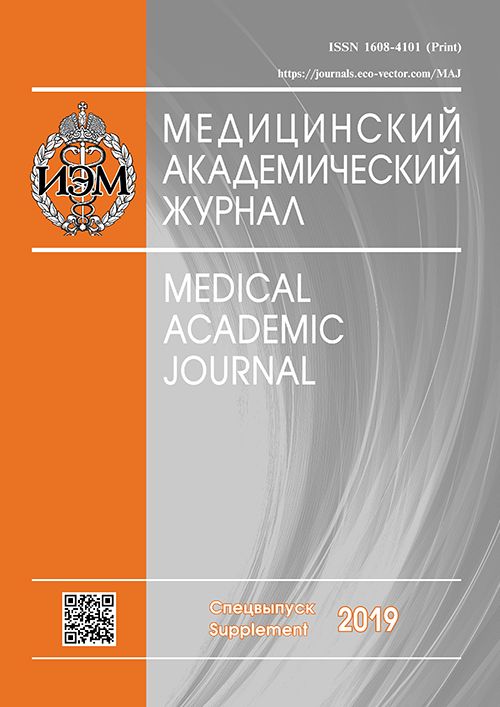THE EFFECT OF THYMOSIN β4 ON THE FUNCTIONAL ACTIVITY OF THE IMMUNE AND NERVOUS SYSTEM COMPONENTS
- Authors: Ivanova VP1
-
Affiliations:
- Sechenov Institute of Evolutionary Physiology and Biochemistry, Russian Academy of Sciences, Saint Petersburg
- Issue: Vol 19, No 1S (2019)
- Pages: 164-166
- Section: Articles
- Published: 15.12.2019
- URL: https://journals.eco-vector.com/MAJ/article/view/19380
- ID: 19380
Cite item
Abstract
The data on properties of thymosin β4, a conserved multifunctional polypeptide of mammals is summarized. Attention has been focused on regulatory activity of thymosin β4 in regard to immune and nervous system components. In these systems thymosin β4 is present in different cell types both stationary and mobile ones. Besides intracellular localization thymosin β4 is also located in extracellular fluids. Inside cells, thymosin β4 has been postulated to regulate actin polymerization as a G-actin-sequestering molecule. But molecular mechanisms of thymosin β4 located extra cells on cell functions remain unclear. The structural-functional organization of thymosin β4 is also discussed. Thymosin β4 is a perspective medicine preparation for the therapy of diseases related to immune and neurological disturbances in patients.
Full Text
About the authors
V P Ivanova
Sechenov Institute of Evolutionary Physiology and Biochemistry, Russian Academy of Sciences, Saint Petersburg
References
- Abiko T, Sekino H. Synthesis of six common amino acid sequence fragments of thymosin β4, β8 and β9 and determination of their effects on the low E-rosette forming cells of lupus nephritis patients. Chem. Pharm. Bull. 1984;32(1):228-236.
- Huff T, et al. β-Thymosins, small acidic peptides with multiple functions. Int. J. Biochem. Cell Biol. 2001;33(3):205-220.
- Ivanova VP, et al. The effect of protein synthetic fragments on the humoral immune response. Ukr. Biokhim Zh. 1990;62(5):83-86.
- Ivanova VP, et al. The role of thymosin β4 fragment on activation of phagocytic cells. In: Molecular mechanisms of adaptations. Makhachkala: IPC DSU; 2008. P. 97-100.
- Morris DC, et al. Treatment of neurological injury with thymosin β4. Ann. N.Y. Acad. Sci. 2012;1269(1):110-116.
- Safer D. The interaction of actin with thymosin β4. J. Muscle Res. Cell Motil. 1992;13(3):269-271.
- Sosne G, et al. Biological activities of thymosin β4 defined by active sites in short peptide sequences. The FASEB J. 2010;24 (7):2144-2151.
Supplementary files







